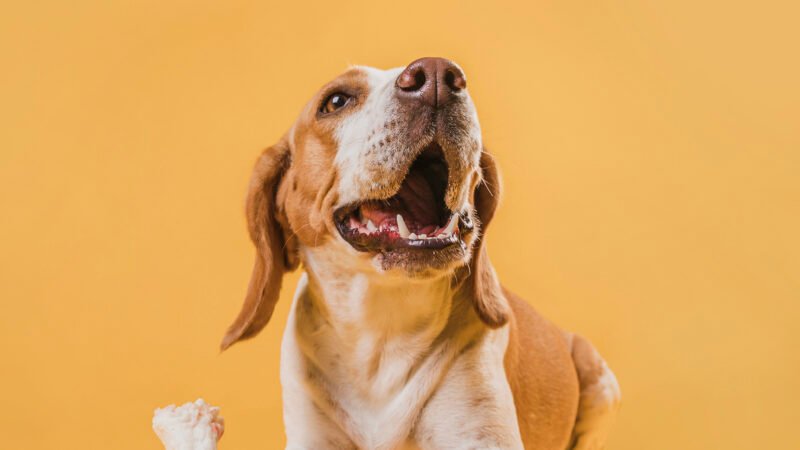Is Your Dog's Bad Breath Unbearable?
DogProfs' Guide to Canine Oral Health
Ever recoiled from your dog’s bad breath? You’re not alone! Dog bad breath isn’t just unpleasant; it’s often a red flag for underlying dental issues that can seriously impact your dog’s overall health and even pose a risk of bacterial transmission. Today, DogProfs is here to share essential at-home dog dental care tips.

The Hidden Dangers of Poor Dog Dental Health
Just like us, dogs suffer from various dental problems, with periodontal disease being the most common. This starts when plaque, a sticky film of bacteria, builds up on their teeth. If not removed, plaque hardens into tartar, which can then lead to:
Gingivitis: Inflammation of the gums, making them red, swollen, and prone to bleeding.
Periodontitis: If gingivitis isn’t treated, it progresses to periodontitis. The infection spreads below the gum line, damaging the tissues supporting the teeth. This can result in:
Pain and Discomfort: Your dog might be reluctant to eat, especially hard kibble, or show signs of sensitivity around their mouth.
Tooth Loss: As the supporting structures weaken, teeth can become loose and eventually fall out.
Systemic Health Issues: Bacteria from dental infections can enter the bloodstream and travel to other organs, potentially causing problems with the heart, kidneys, and liver. This is a serious concern many owners aren’t aware of.
Many dogs, particularly as they age, live with chronic dog dental pain that goes unnoticed by their owners because dogs are masters at hiding discomfort. Regular dental care can prevent a lot of this suffering.
Essential At-Home Dog Dental Care Tips
The good news is you can do a lot at home to keep your dog’s teeth healthy and prevent serious issues.
1. Brushing is Best for Dog Teeth
The gold standard for at-home dental care is daily dog teeth brushing. While it might sound daunting, with patience and the right approach, most dogs can learn to tolerate it.
Choose the Right Tools: Use a dog-specific toothbrush (designed to fit their mouth) or a finger brush. Always use dog-specific toothpaste—human toothpaste contains ingredients like xylitol that are toxic to dogs. Pet toothpastes come in flavors dogs love, like chicken or peanut butter.
Make It a Positive Experience: Start slowly. Let your dog lick the toothpaste off your finger. Then, gently rub it on a few teeth. Gradually increase the time and number of teeth you brush.
Focus on the Gum Line: This is where plaque accumulates most. Aim for circular motions, just like you’d brush your own teeth.
2. Dental Chews and Toys
While not a substitute for brushing, dog dental chews and dental toys for dogs can help reduce plaque and tartar buildup.
Look for Vet-Approved Products: Not all dental chews are created equal. Look for products with the VOHC (Veterinary Oral Health Council) seal of acceptance, which signifies they meet standards for plaque and/or tartar reduction.
Consider Durability: Choose chews appropriate for your dog’s size and chewing habits to prevent choking hazards or dog tooth fractures.
3. Dental Diets and Water Additives
Some specialized dog dental food options are designed with unique kibble shapes and textures that help scrape away plaque as your dog chews. Similarly, certain dental water additives for dogs can help reduce bacteria in your dog’s mouth. Discuss these options with your veterinarian to see if they’re a good fit for your dog.
Breed-Specific Dog Dental Care Focus
While all dogs benefit from good oral hygiene, some breeds are more predisposed to dental issues due to their genetics and jaw structure.
Small Dog Breeds (e.g., Chihuahuas, Yorkshire Terriers, Poodles):
These breeds often have crowded teeth, making them more prone to plaque and tartar accumulation. Their smaller mouths also mean that even minor dental disease can have a significant impact. Daily brushing is exceptionally important for small dog dental health.
Brachycephalic Dog Breeds (e.g., Pugs, Bulldogs, Boxers):
Dogs with “smooshed” faces often have misaligned or crowded teeth due to their short muzzles, which can trap food particles and lead to faster plaque buildup. They also tend to breathe through their mouths more, which can dry out saliva, reducing its natural cleaning action. Thorough and consistent brushing, along with regular veterinary check-ups, are vital for brachycephalic dog dental care.
Large Dog Breeds:
While less prone to crowded teeth, large breeds can still develop significant tartar buildup. Their powerful jaws mean they can be harder on chew toys, so choose durable options.
When to See Your Vet: Professional Dog Dental Cleanings
Even with diligent at-home care, most dogs will eventually need a professional dog dental cleaning under anesthesia. This allows your veterinarian to thoroughly examine each tooth, clean below the gum line (where most disease occurs), and polish the tooth surfaces. X-rays are often taken to assess the health of the tooth roots and jawbone.
Signs your dog might need a professional cleaning or a vet visit for dental concerns include:
Persistent bad dog breath
Red, swollen, or bleeding gums
Visible tartar buildup (brown or yellow crust on teeth)
Broken or loose teeth
Excessive drooling
Reluctance to eat, especially hard food
Pawling at the mouth or rubbing their face
Investing time in your dog’s dental health is an investment in their overall well-being and longevity. By combining regular at-home care with professional veterinary check-ups, you can ensure your beloved companion keeps a happy, healthy smile for years to come.
